We were shocked and saddened to hear the news today that Zaha Hadid had passed. Hadid will be remembered as a genius, her architecture and design changing the way we see the world. Ten years ago, she agreed to participate in Whitewall‘s first-ever issue, for which we are forever grateful. We pay honor to her here, by sharing our winter 2011 issue feature on Hadid.
********
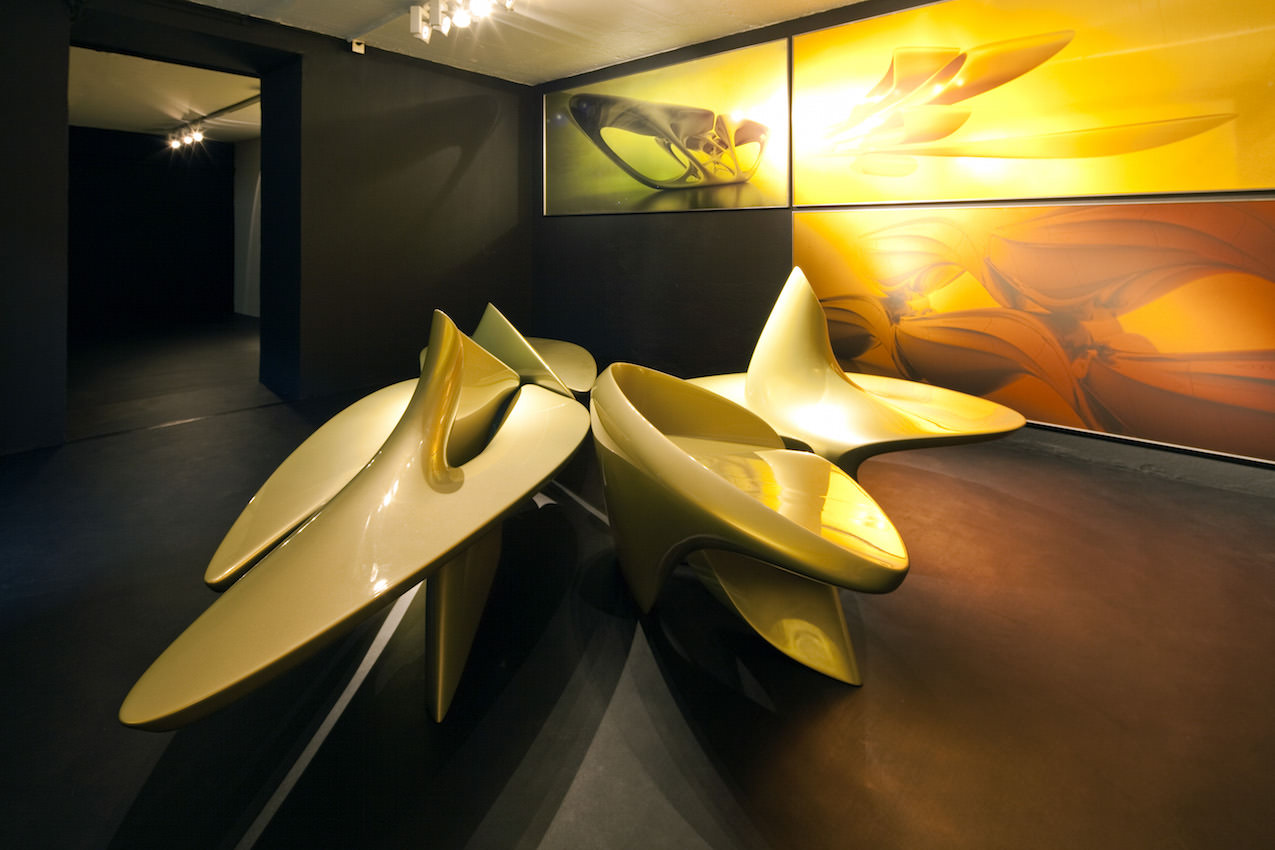
Galerie Gmurzynska
“Suprematism,” Winter 2011
By Anthony Haden Guest
“Zaha Hadid and Suprematism,” on view in the summer of 2010 at the Galerie Gmurzynska, Zurich, was both a revealing look at the practice of this architect/artist/designer but also one of the most remarkable transformations of a gallery space since the palmy days of Minimalism when, for instance, Douglas Christmas of the Ace Gallery closed the space for six months and rebuilt it to hang a 20,000-pound Richard Serra.
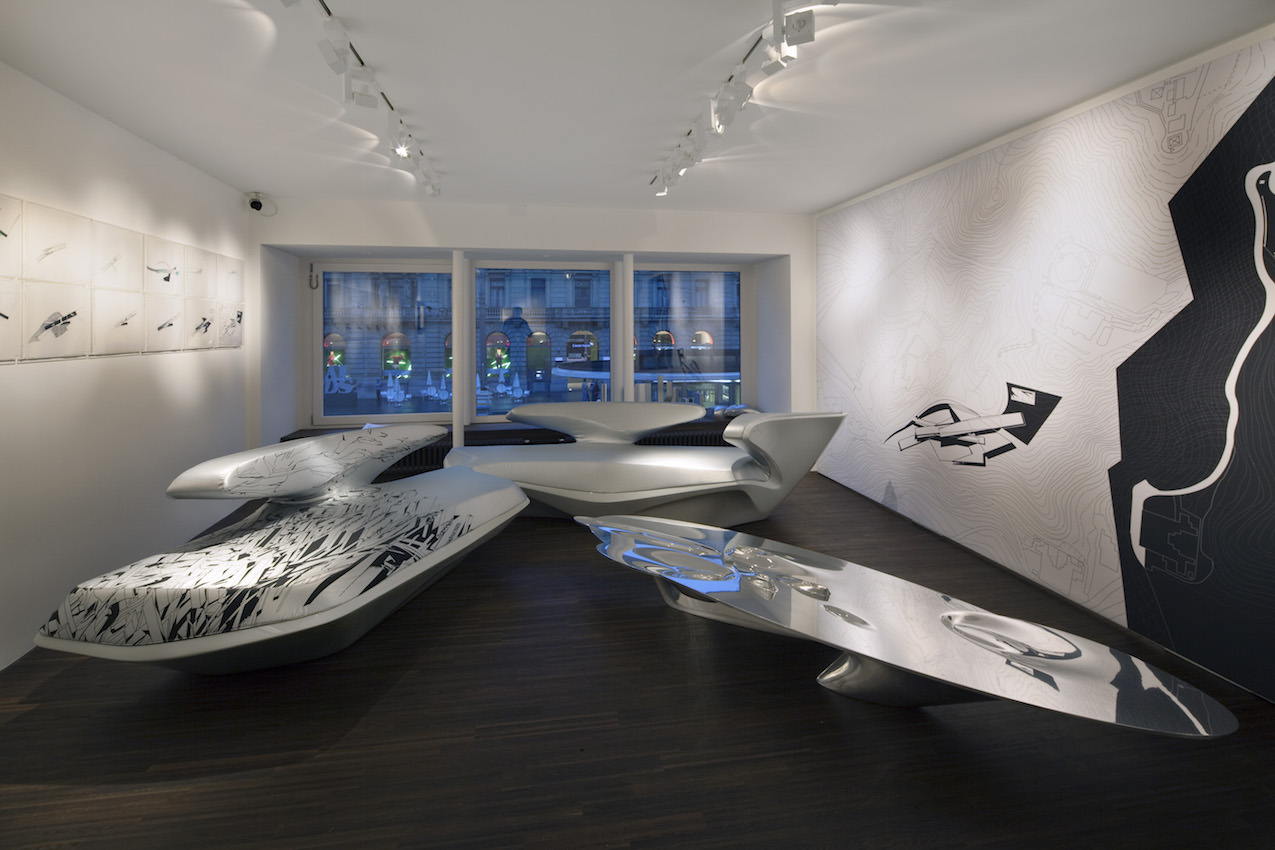
Galerie Gmurzynska
The seed was sown 20 years ago when Mathias Rastorfer and Krystyna Gmurzynska, who are partners in the gallery, attended “The Great Utopia,” a show of Russian Constructivist work at the New York Guggenheim guest-curated by Hadid, who was then an architect famous for her unbuilt designs. But Hadid’s own first building, the Vitra Fire Station (1993) in Weil am Rhein, was soon a reality. Building after remarkable building has followed. And now the Gmurzynska show.
The gallery gave Hadid the pick of their remarkable collection of work by Russians artists, including Kazimir Malevich, Alexander Rodchenko, and El Lissitzky, and she transformed what Rastorfer describes as “a very difficult 1917 to 1920 space” in a way that channeled the headstrong optimism of the Constructivist moment.
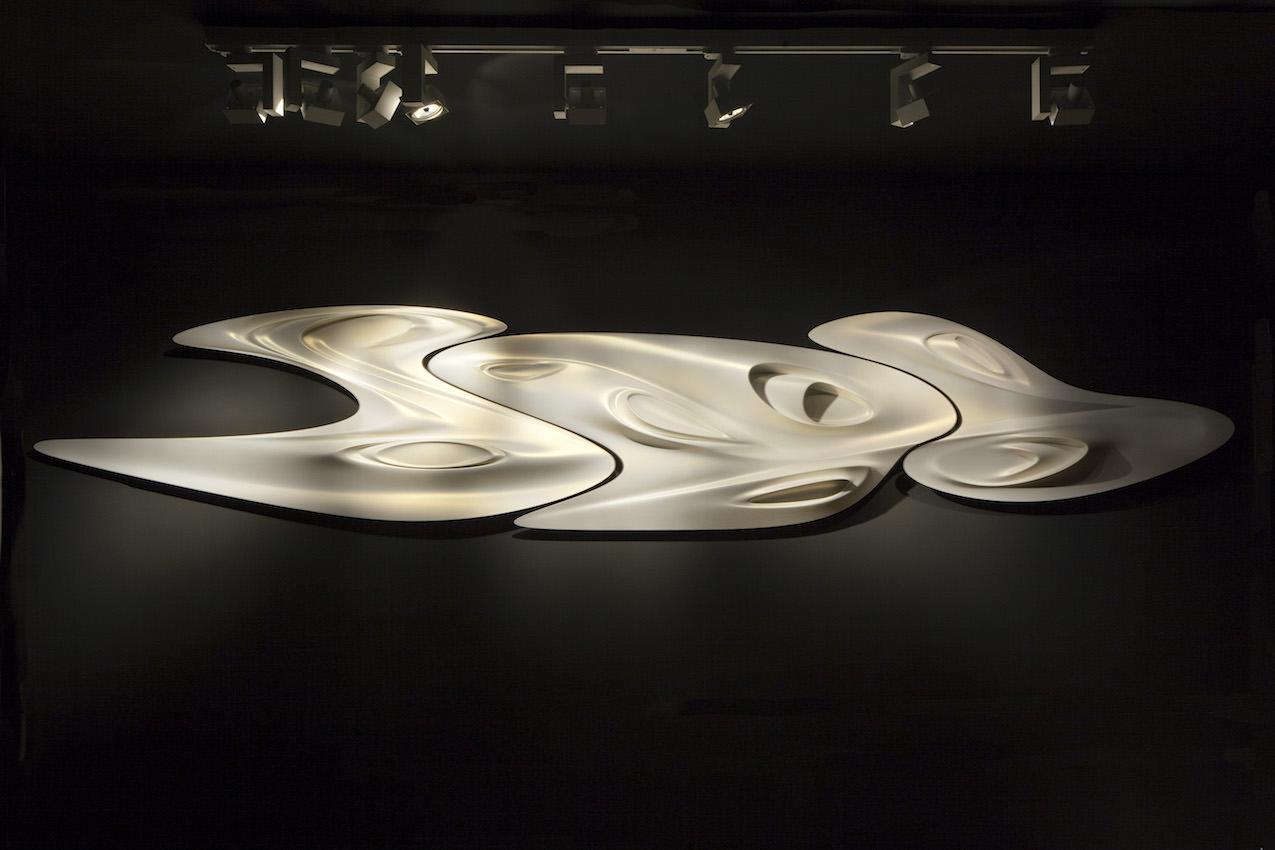
Galerie Gmurzynska
Her show sped up history in another sense. It included her early drawings for the clubhouse in Hong Kong where she worked directly on architectural paper. “Now, of course, the execution is almost always with a computer. That is what is now the medium to use,” Rastorfer says. “Zaha Hadid and Suprematism” has come down, but as a look into the influences that shaped one of the few women to have commandeered a position on the art world’ upper slopes, it will exist in the records and in cyberspace as long as there are eyes to look.
WHITEWALL: So much has changed since you curated “The Great Utopia.” I remember even a few years ago you were widely written off as this genius architect who never actually got anything built. And in 1992 art was still on one planet and design on another.
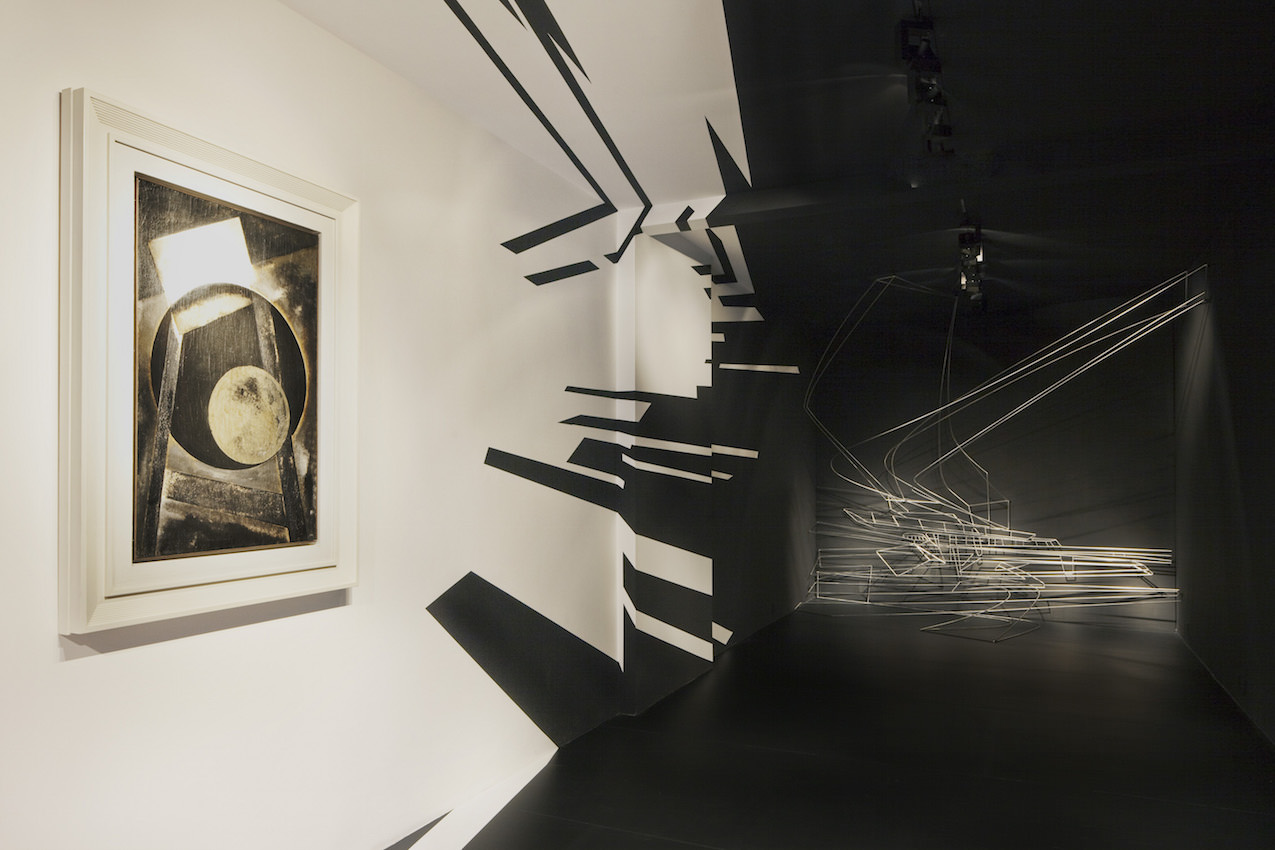
Galerie Gmurzynska
ZAHA HADID: There was no design. That is really . . . there was design, of course. And artists were involved. But not like now.
WW: Yes, indeed. When I was growing up in London, people who were interested in art would have a Barcelona chair and pieces like that. But for some reason all that disappeared.
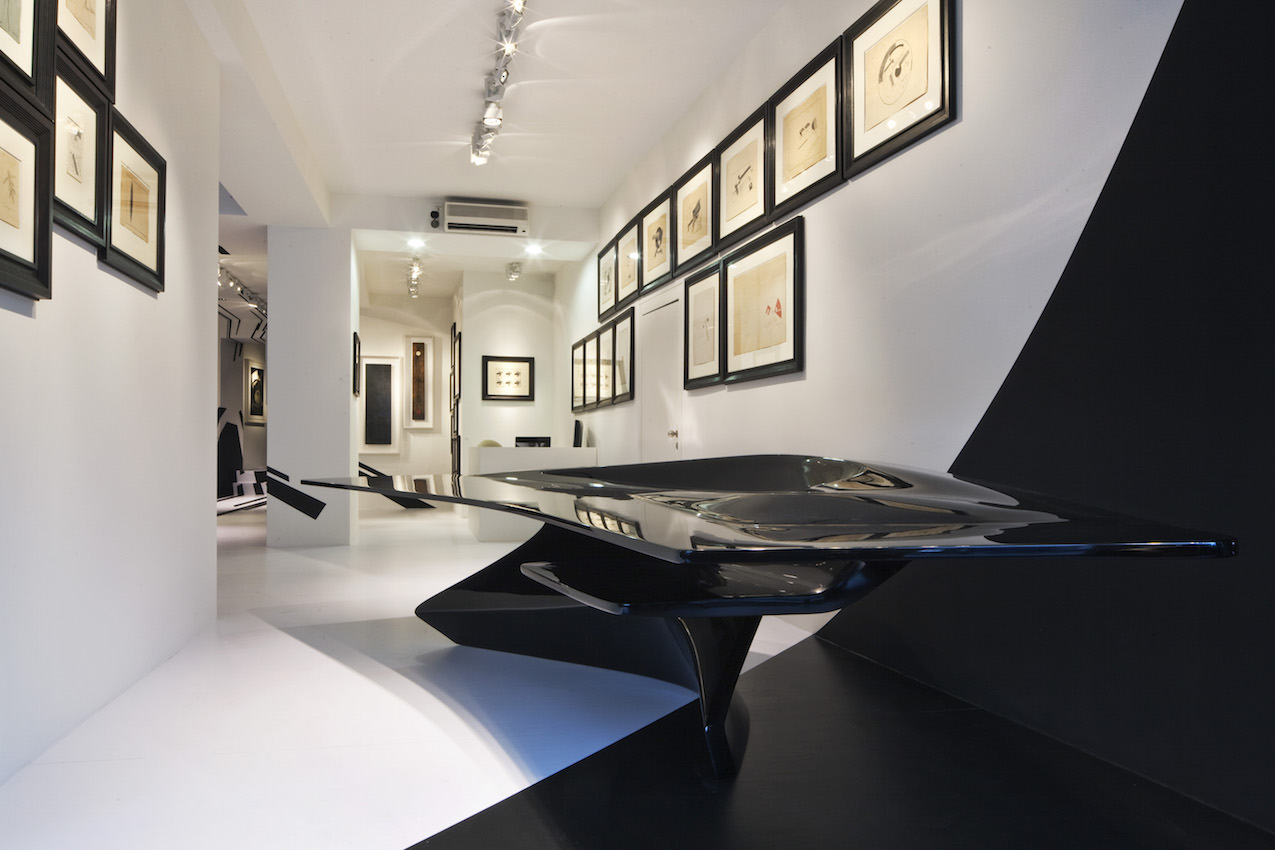
Courtesy of Galerie Gmurzynska
ZH: Yes, artists would have them. Even in the seventies.
WW: Was there a lightbulb moment in your thinking? Something personal?
ZH: There’s no development. I’m not interested in memory. I think it’s more in general. No, I can trace the work, how it came from the Russians, and because of my Arab background, because of abstraction, because of my fascination with the landscape. It has more to do with that whole foundation of landscape and topography. And it has to do with morphology.
WW: The work could be any size. It could be a microbe, it could be a spiral nebula . . .
ZH: It does relate to all that indirectly. It’s all about the cosmos. And the constellations of the stars. How you can achieve dynamic organization through a different kind of equilibrium, you know. And for that I have been making these forms that could be any scale. And what is interesting about the whole fabrication process is that you can work on a changing scale. You refine it. And go to a larger scale.
There are so many different things: the issue of structure and functionality, and how they work and how they are connected with another. They are following a program. And the programs can actually change something essential, from dealing with a foreign body, a landlord, to addressing the masses in terms of human health and safety. It’s no longer just a private domain. You can change everything . . . The climate can also change.
WW: I think that what one feels with this work is that one is being introduced into a system that can change one’s life, And I think that German Expressionism is kind of the evil twin of Russian Constructivism. Dr. Mabuse, all that.
ZH: Of course, all these revolutions happened at more or less the same time. Not physical, but in architecture and art. They were very different in Europe and Russia and America. In America it was to do with corporate building. But I think of Coney Island, for example. There was this ideology that was also very industrial and repetitive but expressionistic at the same time. There was a very magical emotion in the country. There was almost a randomized mood, random meetings in a barrel. So I think there was this hedonistic aspect matched with the puritanical. And that changed the program of many kinds of buildings, I think. And added to the interest in the public domain.
WW: Tennyson wrote some wonderful futuristic verses. Even in Henry James you can feel the breath of the future blowing in The Princess Casamassima.
ZH: I remember when I was first getting these books. They were very inspiring stuff.
WW: What buildings did you actually have up in 1992 at the time of the “Utopia” show?
ZH: We were working on Vitra. Finally!
WW: Apparently, for many years you worked through the competition process?
ZH: Absolutely.
WW: Several good artists, like Dennis Oppenheim and Alice Aycock, put themselves through that process, where they go up against 20-year-olds, 21-year olds. But most artists, when they reach a certain level, just don’t want to do that anymore. But you still do that?
ZH: I believe in it. Because all of the work I got most was through competitions.
WW: Really? Very few direct commissions?
ZH: Now I get direct commissions. But I do believe in it. Partly because I think when you are doing a competition, it’s another kind of world. You don’t have the client pressure, you have different kind of pressures. I mean, you are working against time. You have no choice. There’s only so many minutes in a day. It’s incredibly hard. But I don’t know, sometimes ideas come out of those projects. I do it more for the ideas than just trying to get the projects. If I don’t win that means nothing to me. Sometimes you’ve done your best work and then it will surface again in a different kind of way.
WW: I liked your Chanel project in Central Park, the art-gallery-in-a-handbag. Many artists are working with luxury brands these days. David LaChapelle worked with Maybach, Michael Landy with Louis Vuitton. Did working with Chanel get you negative feedback?
ZH: Uhhhh! (Thoughtfully) No. Chanel got pretty badly covered. The timing of that piece was in the middle of the recession. But they had been working on this project for two or three years. They got the permission to build in Central Park, which was an enormous investment. They weren’t going to cancel the day before. And, actually, the writers should have gone back to see how many people were queuing up at five in the morning to get in. I think that people are intrigued in some sense by a form which is not contemplative, which that they might already have in their house. I personally feel that a cultural building should be accessible. But being in New York in the park, all right, you’re passing by; you see it’s by Chanel. You want to see what’s going on inside. It’s something more accessible. People criticize artists for doing jewelry or whatever. But I don’t.
WW: Artists used to work for the church. Ingres painted Napoleon . . .
ZH: You had the Bauhaus period when people did everything in every scale. It’s not a new thing.
This interview was published in Whitewall‘s winter 2011 issue.









